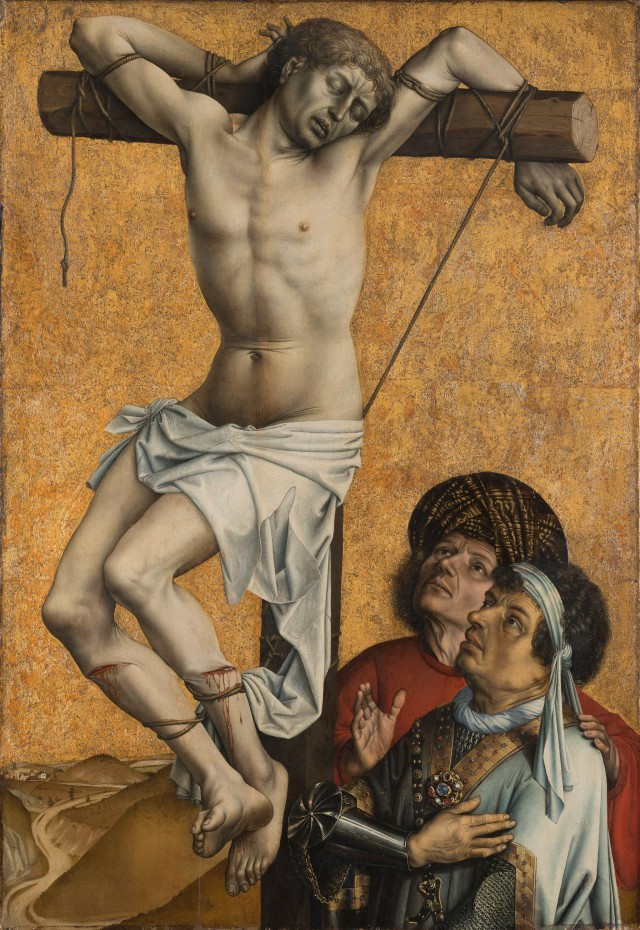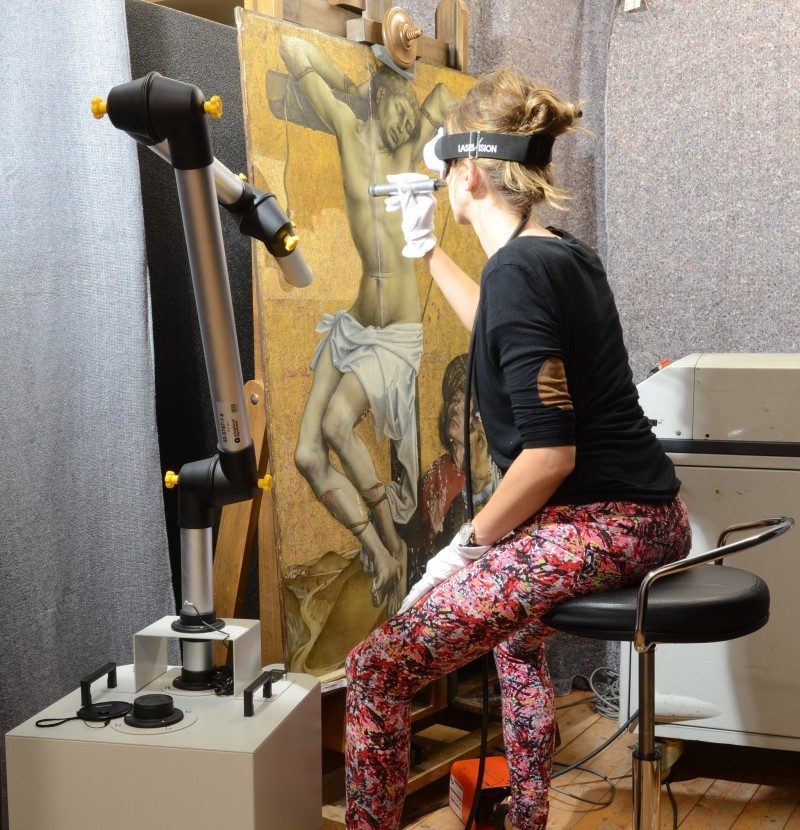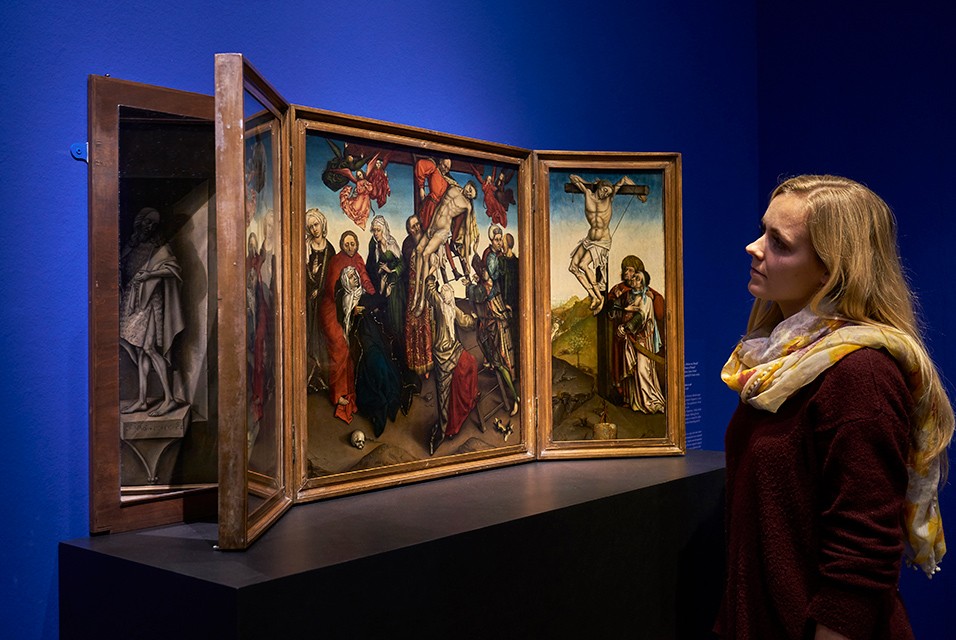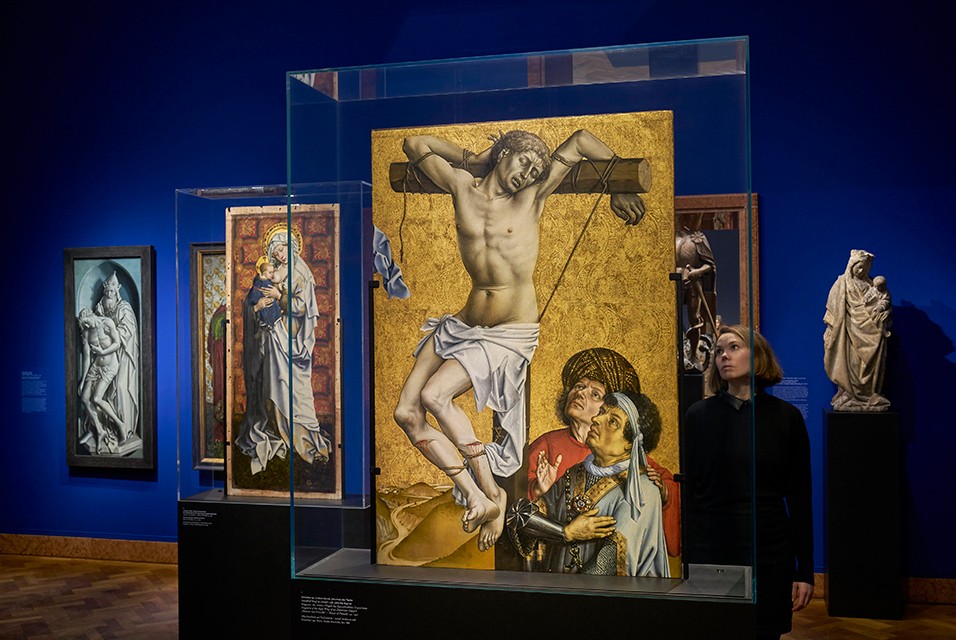From 15 November 2017 to 18 February 2018, The Liebieghaus Skulpturensammlung will present a special exhibition revolving around a work of key significance to the history of European art: the so-called “Crucified Thief“ by the Master of Flémalle, one of the most enigmatic figures of Early Netherlandish painting.
Comprehensive examination and restoration of the fragment got underway at the Städel Museum in October 2014. Painted on both sides, it is the only surviving section of a large-scale triptych of the Deposition that was among the most prominent and influential works of Netherlandish painting at the beginning of the fifteenth century.
 Now that the conservation and restoration measures have reached completion, the precious work literally shines with new splendour. The exhibition sheds light on the procedure and spectacular outcome of the technological examination and the restoration. It also features thirteen selected comparanda in the mediums of sculpture, panel painting, drawing and book illumination, serving to contextualize the fragment in a wide variety of ways.
Now that the conservation and restoration measures have reached completion, the precious work literally shines with new splendour. The exhibition sheds light on the procedure and spectacular outcome of the technological examination and the restoration. It also features thirteen selected comparanda in the mediums of sculpture, panel painting, drawing and book illumination, serving to contextualize the fragment in a wide variety of ways.

“The Crucified Thief by the ‘Master of Flémalle’ holds a prominent position in Early Netherlandish painting. The chequered history of the original work from altarpiece to fragment, from sacred object to panel painting, and the countless measures it has been subjected to over the course of nearly six hundred years led to our wish to carry out a fundamental evaluation. Thanks to the latest restoration, the painting’s specific forcefulness, which results from the subtle manner in which the artist juggled with visual expectations and pictorial realities, now comes into its own in a very striking way”, observes Prof Dr Jochen Sander, the curator of the exhibition and head of the collection of German, Dutch and Flemish painting before 1800 at the Städel Museum.
The Crucified Thief once formed the upper half of the right wing of a monumental altarpiece presumably executed for a Bruges church or chapel around 1430 and meanwhile completely lost except for this fragment. In its open state it showed the Deposition of Christ between the two thieves who had been executed with him. In its closed state, it displayed the simulated sculptures of St John the Baptist and another figure, probably Christ. Like the altarpiece to which the Städel Museum’s “Flémalle panels” belonged (the works from which the master’s name of convenience derives), which has likewise survived only in fragments, the Deposition triptych was executed around 1430. In the Netherlandish art of the fifteenth century there are numerous indications that the “Flémaller’s” Deposition caused quite a sensation among his contemporaries.
 The Master of Flémalle is one of the most enigmatic artists of Early Netherlandish painting. Contrary to what the name of convenience suggests, what lies concealed behind this name is not a clearly definable individual but an entire group of painters. The artist Robert Campin of Tournai had brought them together in his workshop between 1426/27 and 1432 for the execution of several major altarpieces. One of them was Rogier van der Weyden. In 2008, in cooperation with the Staatliche Museen zu Berlin, the Städel Museum devoted the first comprehensive exhibition ever to the “Master of Flémalle” and Rogier van der Weyden. That show moreover investigated the unresolved questions of art history with regard to ‘ars nova’, the revolutionary new painting style that emerged in the Burgundian Netherlands and, with its realistic representation of reality down to the smallest detail, marked the commencement of modern art at the beginning of the fifteenth century.
The Master of Flémalle is one of the most enigmatic artists of Early Netherlandish painting. Contrary to what the name of convenience suggests, what lies concealed behind this name is not a clearly definable individual but an entire group of painters. The artist Robert Campin of Tournai had brought them together in his workshop between 1426/27 and 1432 for the execution of several major altarpieces. One of them was Rogier van der Weyden. In 2008, in cooperation with the Staatliche Museen zu Berlin, the Städel Museum devoted the first comprehensive exhibition ever to the “Master of Flémalle” and Rogier van der Weyden. That show moreover investigated the unresolved questions of art history with regard to ‘ars nova’, the revolutionary new painting style that emerged in the Burgundian Netherlands and, with its realistic representation of reality down to the smallest detail, marked the commencement of modern art at the beginning of the fifteenth century.

























